First, optical module: data transmission core devices, benefit from the outbreak of AI demand
Optical module: 10 billion dollar market size, traffic growth is the core of the drive
The application of optical communication is closely related to the explosive growth of information flow. With the explosive growth of information, the requirements for communication quality and information quality are getting higher and higher, and optical communication has become an inevitable way out. In the current electro-optical network architecture, the optical module is the core device that undertakes the photoelectric conversion function, so the demand core of the optical module comes from the explosive growth of data traffic.
When the core increment of data traffic shifts from the telecom network to the data center and then to the AI cluster, the main growth drivers of optical modules at different stages also change. According to LightCounting data, the overall size of the optical module market for optical devices exceeds 10 billion dollars, of which the digital pass market has accounted for half. Driven by the continuous development of mobile Internet, cloud computing and AI, the digital pass market has become the main downstream scene of the optical module industry for optical devices.
Telecom market: The overall market is expected to stabilize and recover
The global market size of telecom optical modules is around $5-6 billion. In the telecommunications market, optical modules mainly include fixed-line network access (FTTx), wireless access (wireless forward and backpass), and CWDM/DWDM modules used in passive wave division systems (including DCI/ MAN/backbone) and other scenarios. Overall, the demand for the telecom market reached a relative high after experiencing the 5G iterative upgrade drive in 2019, and the demand has slowed down in recent years, with the overall market size of about $5-6 billion. Among them, CWDM and DWDM modules account for the highest proportion, and the current market size is 4 billion US dollars. The market size of wireless forward and wireless backhaul modules is about $600 million; The market size of PON modules used by FTTx is around $1 billion.
In terms of the shipping structure of the telecom market, PON modules for optical fiber access account for a relatively large proportion (more than 90 million pieces of shipments in recent years); The unit price of wavelength division multiplexing (WDM) optical modules is high, and the quantity of goods in recent years is about 1.8 million pieces.
Data communication market: Traditional data center demand is stable, and AI has become a core source of growth
The overall size of the digital optical module market is currently about $5 billion, and AI has become a subsequent core source of growth. Optical modules are an important part of the network side of AI investment, which is strongly related to the shipment of GPU on the training side, and the explosion of traffic demand in the inference section is also expected to drive demand growth. In the context of continuous investment in computing power, AI has become the core growth force of the optical module digital communication market.
Driving force: Break Nvidia's monopoly and unleash new demand
Ultra Ethernet Alliance formed to drive competition with IB in AI. Ultra Ethernet Consortium (UEC) brings together AMD, Intel, Broadcom, Cisco, Arista, HPE, Meta, Microsoft and other cloud vendors to provide Ethernet-based open, interoperable, high-performance full communication stack architecture for the AI field. UEC will introduce new transport protocols that provide more flexible transport without the need for lossless networks, allowing features such as multipath and out-of-order packet transfer required by man-to-many AI workloads. Google also developed the Falcon transport protocol, which supports RDMA and NVMe, as well as the extended upper layer protocol ULP, which also serves as the Verbs of traditional IB through the mapping layer. The current AI network mainly uses the IB protocol, and the improvement of the Ethernet protocol is expected to promote related switch manufacturers to accelerate product iteration in the AI field and release new demands for high-speed optical modules.
Second, the AI cluster network architecture is upgraded, and the optical module demand is flexible
The growth of data traffic promotes the upgrading of network architecture. The traditional data center has undergone a change from a three-tier architecture to a leaf ridge architecture, mainly to accommodate the growth of data center east-west traffic. As the process of data on the cloud continues to accelerate, the scale of cloud computing data centers continues to expand, and the use of virtualization, hyper-converged systems and other applications to promote data center east-west traffic growth - according to Cisco's previous data, in 2021 data center related traffic, data center internal traffic accounted for more than 70%. The change of network architecture results in the change of optical module requirements. Taking the transformation from the traditional three-layer architecture to the leaf ridge architecture as an example, the number of optical modules can be increased up to tens of times under the leaf ridge network architecture.

C-light's transceivers excel in meeting this demand by providing high-speed, high-capacity data transfer capabilities that enable seamless communication between AI systems, servers, and storage infrastructure. C-light optical modules deliver the necessary bandwidth and low-latency performance essential for the efficient operation of AI workloads. By ensuring optimal data transmission, C-light's optical modules empower organizations to unlock the full potential of their AI applications, enabling them to make accurate decisions and insights at lightning-fast speeds.
Third, Optical Moore's Law: The transmission rate increases, the cost per bit, and the power consumption decreases
Under the flood pressure caused by the burst of data traffic, the bandwidth bottleneck not only brings the problem of transmission efficiency, but also introduces the problem of load imbalance by bundling multiple relatively low-rate links. Therefore, the growth of data traffic requires the optical module speed to increase, but also reduce the unit data transmission cost.









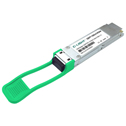

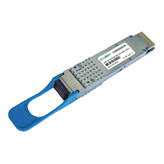

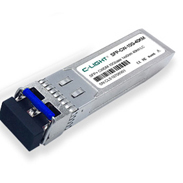
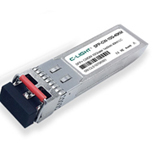
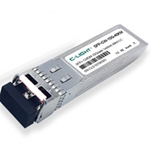
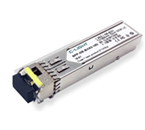
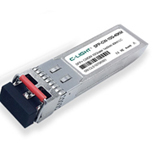
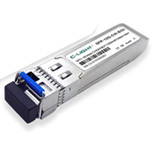



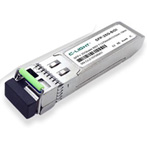

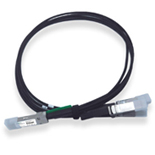
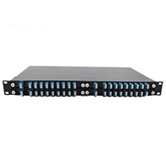
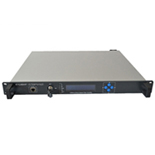
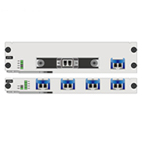

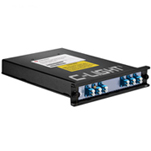
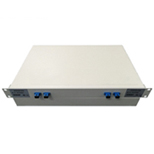


 Your current position:
Your current position: 



